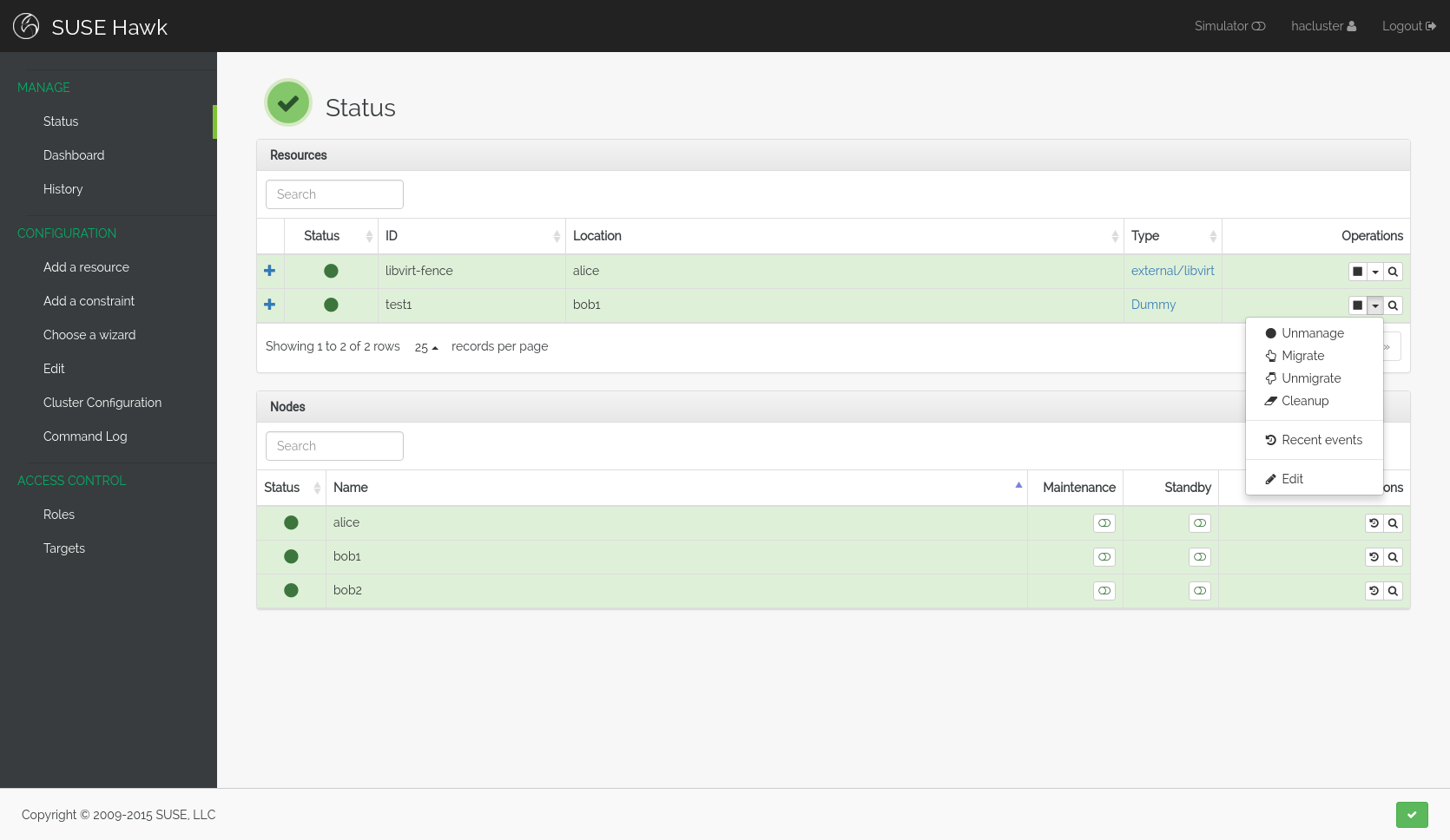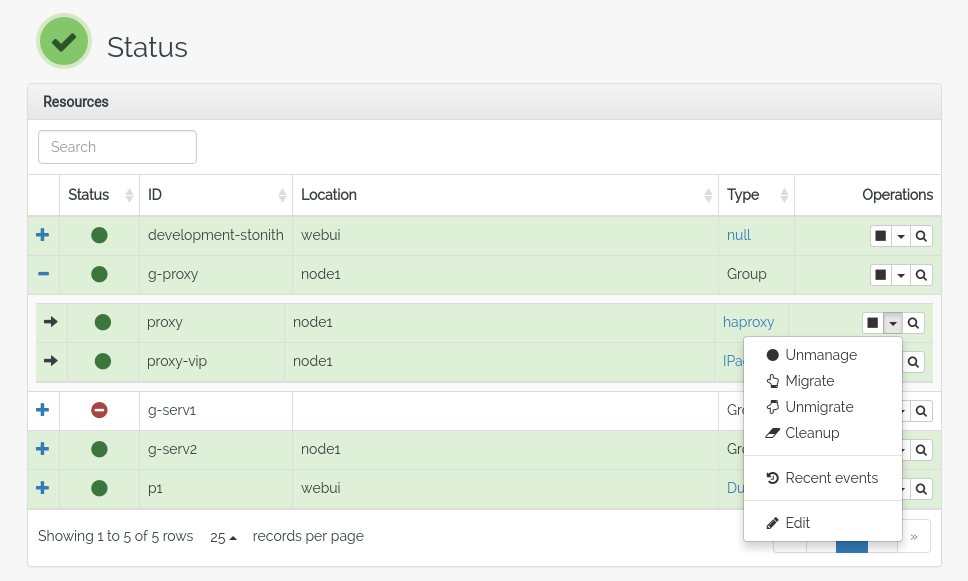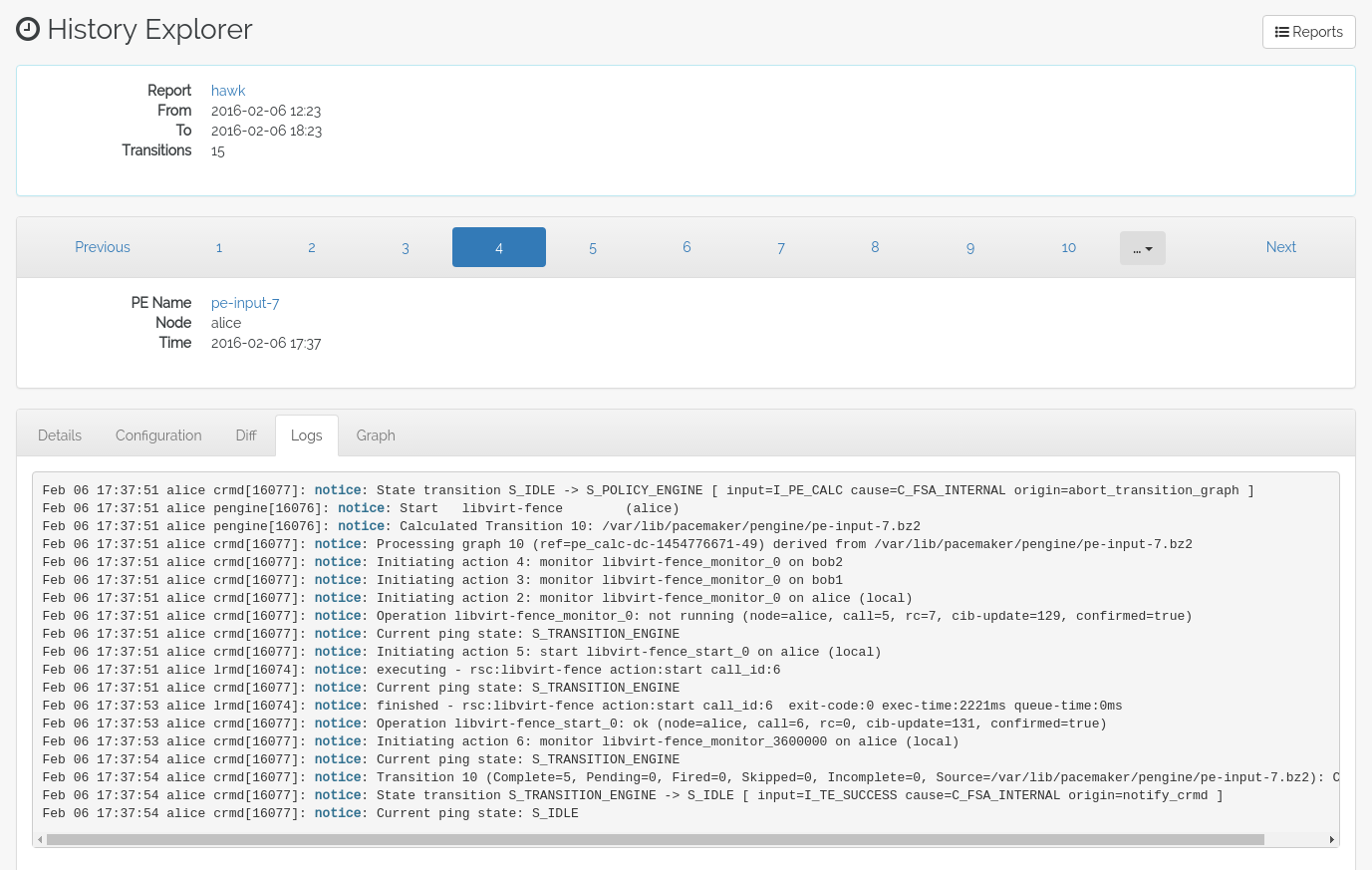Overview
Hawk is a web interface for the Pacemaker High Availability stack. The
goal of the project is to create a complete interface to the HA
cluster, including the configuration, management and monitoring of
cluster resources.
Hawk runs on every node in the cluster, so that you can just point
your web browser at any node to access it. E.g.:
https://your-cluster-node:7630/
Hawk is always accessed via HTTPS, and requires users to log in prior
to providing access to the cluster. The same user privilege rules
apply as for Pacemaker itself: You need to log in as a user in the
haclient group. The easiest thing to do is to assign a password to
the hacluster user, and then to log in using that account. Note that
you will need to configure this user account on every node that you
will use Hawk on.
For more fine-grained control over access to the cluster, you can
create multiple user accounts and configure Access Control Lists (ACL)
for those users. These access control rules are available directly
from the Hawk user interface.
Once logged in, you will see a status view displaying the current
state of the cluster. All the configured cluster resources are shown
together with their status, as well as a general state of the cluster
and a list of recent cluster events (if any).
The navigation menu on the left hand side provides access to the
additional features of Hawk, such as the history explorer, the
multi-cluster dashboard and configuration management. On the top right
of the screen you can enable or disable the simulator, configure user
preferences and log out of the cluster.
Resource management operations (start, stop, online, standby, etc.)
can be performed using the menu of operations next to the resource in
the status view.
How to download
Latest release: Version 2.0.0
The easiest way to get Hawk is to use
the SUSE
Linux Enterprise
or openSUSE
Linux distributions. We try to make sure that it works
on other distributions
and make
packages available for as many as we are able.
Another way to try Hawk is to look at
the guide,
which includes a Vagrant configuration to set up a 1 - 3
node cluster.
Anyone willing to help us maintain packages for other
distributions is more than welcome!
More Information
Related Software
Contact Us
Hawk is developed at github, please file any issues or submit patches
via the github interface.
Please direct comments, feedback, questions etc. to
the ClusterLabs
mailing list.



